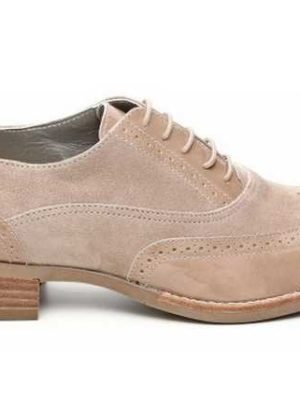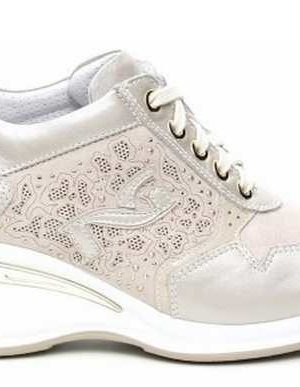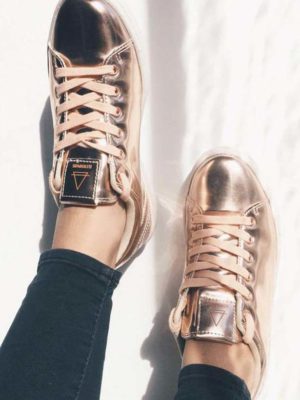Fast-drying fabric. If you plan to spend a lot of time in and out of the water, consider choosing swimwear that dries quickly. Quick-drying suits also help prevent chafing since they wick moisture away from your skin. Thicker fabrics or suits with cotton blends may not dry as fast.
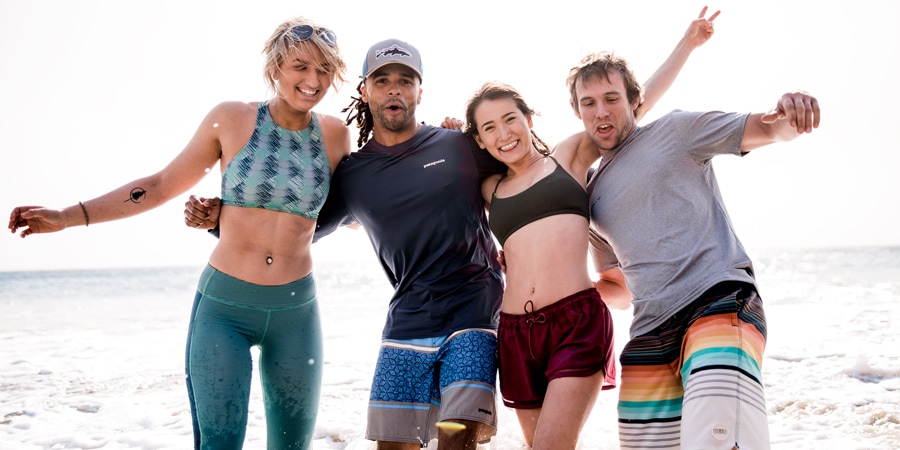
Sun-protective fabric. Sun-protective fabric helps shield you from harmful ultraviolet rays that can lead to sunburn. Clothing is rated on a UPF (ultraviolet protection factor) scale of 15 to 50+ based on its effectiveness against ultraviolet A (UVA) and ultraviolet B (UVB) light. The higher the UPF number, the more protective it is. To find out more, read our article on sun protection clothing basics.
Inner liners: Some men’s swim trunks come with inner mesh brief or other lining to help prevent chafing and provide extra coverage. Women’s suits may include liners for greater opacity when wet, and some have special linings that help the suit cling to your skin and keep it from slipping.
Removable bra cups: Some women prefer the enhanced silhouette and modesty coverage they get with padded bra cups, but those who dislike them can easily remove them.
Pockets: Swim shorts that come with zippered side or rear pockets or inside mesh pockets let you store a car key, lip balm or other small essentials while doing sports such as paddling or kitesurfing.
Swimsuit strap styles: The straps on women’s swimsuits can be fashionable, but for active sports the function is essential. When choosing a suit, keep in mind that wider straps are often more comfortable than narrower ones and usually provide better support.
- Adjustable straps: Adjustable straps allow you to loosen or tighten the straps to fit your specific body and come in handy when straps loosen with use.
- Back closure: Bathing suit tops with back closures can make tops easier to put on and remove, especially when the fabric is wet.
- Racerback / crisscross: These strap styles allow for a g oodrange of arm and shoulder movement while maintaining a secure fit.
- Halter: The straps on halters tie around your neck and are a good support choice for those with larger busts (though be aware that they can also cause some discomfort around the neck).
Swimsuit Fit
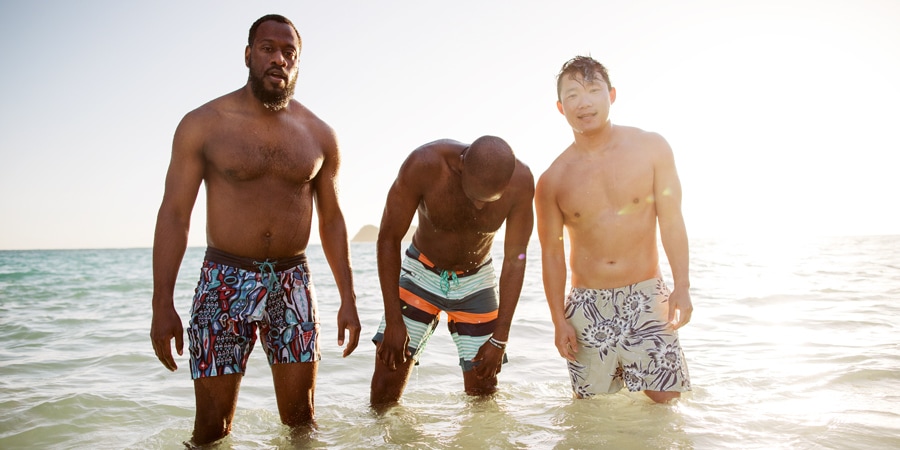
It’s best to try a swimsuit on and move around in it so you know where it’s too tight or sags. Schedule a personal outfitting appointment to get customized advice.
How should a swimsuit fit? For fitted styles, you want your suit nice and snug but not overly constricted. If you keep tugging on your suit because it’s riding up on you or the straps or waistband dig into you, it’s probably a sign to go up in size. If the straps fall off easily, the waistband seems loose or you see gaps, extra folds or wrinkles of fabric, try a size smaller.
Understanding bra fit and support: Many swimsuit bras come with removable soft cups to give you extra shape and modesty. Some suits have built-in shelf bras or underwire to support larger busts (make sure the underwire lays flat and doesn’t pinch anywhere.)
For more tips on bra fit and support, see our article on How to Choose a Sports Bra. Note that many of the same fit guidelines hold true for swimsuits and sports bras.
Tips for Choosing a Swimsuit
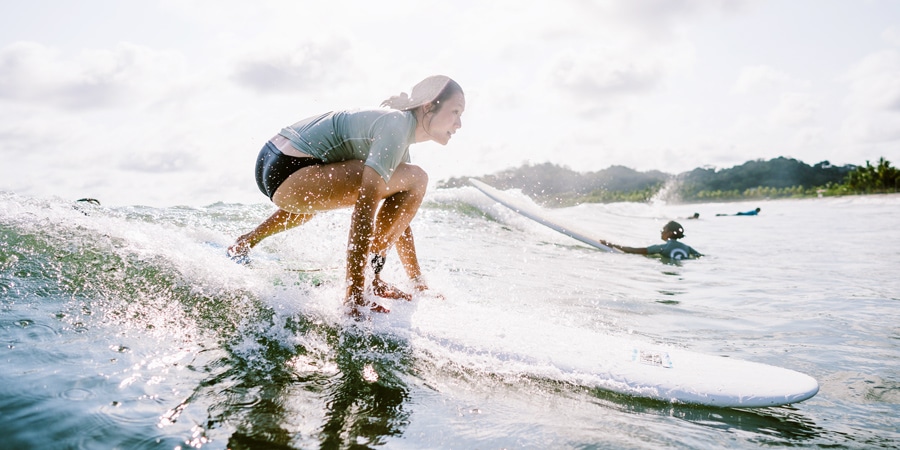
One-piece or two? Boy short or bikini briefs? More coverage or less? Ultimately the answer when choosing swimwear is highly personal.
For more support up top: Consider one-piece suits with a halter and adjustable straps in the back, tops with higher necklines, or suits with thicker shoulder straps for more bust support. Other features to look for to keep everything in place: built-in shelf bras, back closures or elastic bands that run under the busts. For swim tops, look for a more generous cut around the breast so your sides are fully covered. Tankinis are another great option if you’re fuller-busted.
For high-intensity water sports: If you spend a lot of time diving into waves, you don’t want to worry about your bottoms rolling up or your top falling down. Look for racerbacks that keep straps off your shoulder, secure cross-back straps or drawstrings that allow you to cinch tops or bottoms for a more secure fit.
For heat and sun protection: Swimwear often comes with lots of layering potential to help you regulate your temperature and exposure throughout the day. You may start with a bikini top in the morning and throw on a rashguard or swim cover-up when the afternoon sun blares down on you. Throw on a pair of board shorts after a paddle or zip up with a sun-protective hoodie.
 Posted in
Posted in  Tags:
Tags: 
